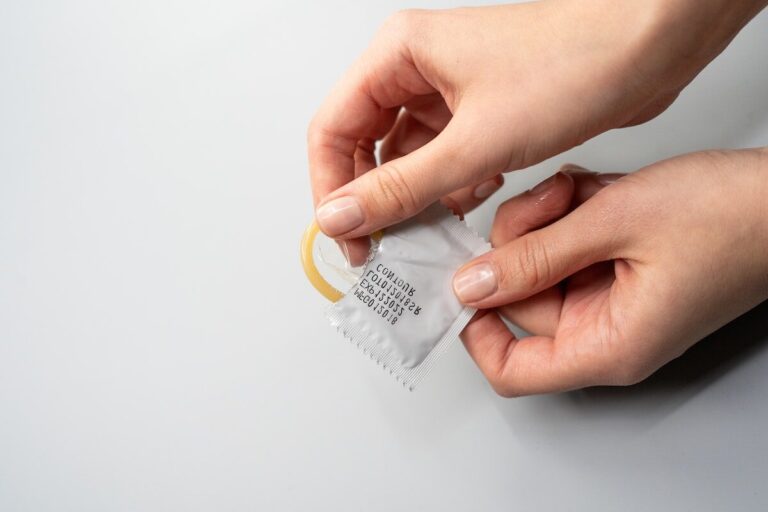Condoms are the go-to contraceptive for family planning and protection against STIs and STDs. But they’re still susceptible to breakage and wear and tear.
We’ve all heard that condoms are tested for strength and leakage after production, but what exactly does this involve? The following are the three main standardised testing methods:.
Electrical Leaks Test
Before a condom is shipped to the store, it will undergo a series of rigorous tests. These include a leaks test, air burst testing and tensile strength testing. Even minor flaws, such as a pinhole, can cause the condom to be rejected. These tests are essential to ensure that the lubricant and latex are of high quality and can withstand the pressures of sex without leaking.
In addition to visual and hang and squeeze methods, condoms are tested for holes using a more precise electrical test. Condoms are placed over electrified metal rods and then dipped in a conductive solution. If there are holes in or near the condom, electricity will pass through the solution and be detected by a computer system. This method is able to detect holes in and around the closed end of the condom that are harder to find with the visual or hang and squeeze methods.
Every single male latex condom is individually electronically tested for pinholes and other defects. The condom is pulled over a piece of metal called a mandril, and subjected to a very intense electric field. Since rubber doesn’t conduct electricity, any break in the film will allow current to reach the mandril and indicate a hole or defect. This test is the most precise way to check a condom for holes and other defects. If a condom fails this test, it will be discarded (machines automatically discard the failed condoms).
Visual Leaks Test
While it may seem like condoms are pretty foolproof, they do break sometimes. And when they do, there’s a risk of unwanted pregnancy and STIs.
During the manufacturing process, random packets of condoms are tested in a variety of ways. They’ll be stretched to their breaking point or filled with water and if they don’t pass these tests, they won’t make it onto the shelves.
One of the main methods used to test condoms is the ISO 4074 visual leaks method. This involves filling a condom with water and visually inspecting it for signs of holes or leaks. Unlike the electrical leaks test, this method is less precise and relies on the technician’s ability to see through the water.
Another method is the ASTM D3492 hang and squeeze test. This is a more precise way of testing condoms for leaks. It involves hanging a condom, sealing its open end and then squeezing it. The aim is to find any areas of the condom where there’s a lack of resistance. The results can be displayed on a screen and the data is also recorded for future analysis. This method is more reliable than the visual leaks test but still takes a while to carry out. This means that it’s not a practical option for factories where time is of the essence.
Tensile Test
A condom acts as a barrier between the male and female private parts during sexual intercourse, helping to prevent unwanted pregnancy and sexually transmitted diseases. It must be free of any cracks, holes, rips and tears in order to be safe for use. The tensile test helps to ensure that this is the case by measuring how much strain it can take before breaking.
This is done by stretching the condom over a metal shape called a mandrel. The mandrel is then subjected to a high electrical current which the rubber should resist. If it does not, the condom has a hole in it and must be discarded. This test is performed using a machine such as the Enersol ELT+ which has the ability to detect small, difficult to find holes in rubber products.
The machine also performs an enhanced hole detection method which checks for holes near and in the tip of the condom. It is important that these are found and that they are not in areas where a person could insert their finger, causing the condom to break.
The system can be used for a number of other tests, such as an air burst leak test where a random sample of condoms within the same production lot are filled with air until they break. This test helps to verify that the condoms can hold a certain amount of air pressure and volume as documented in published standards.
Vacuum Test
Condoms are packaged in a sealed container before being sold, and to ensure that the packaging remains intact until it is opened by a consumer, random samples of condoms are subjected to a vacuum test. This is to make sure that air can not get into the packaging and weaken the condoms inside it.
This involves placing the condom over a metal form, called a mandrel and passing an electrical current through it. Since rubber does not conduct electricity, the passage of any current to the metal mandrel is an indication that the condom has a hole in it or is excessively thin at that point and should therefore be discarded. Machines are designed to automatically discard any condoms failing the test.
The nipple end of the condom, including the transition shoulder portion, is tested by a condom nipple contact member 12, comprising an electrically conductive pad member 13 mounted on a framework 32 so as to extend from the top of the nipple end past the transition shoulder to overlap a portion of the condom body contacting means 11. The pad contact surface of the nipple contact member is curved to correspond with the arc of the mandrel travel pathway 99. In addition, the nipple contact member is mounted so that it remains stationary as the mandrel moves through the first testing stage of the apparatus.
See Also:



